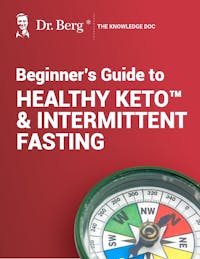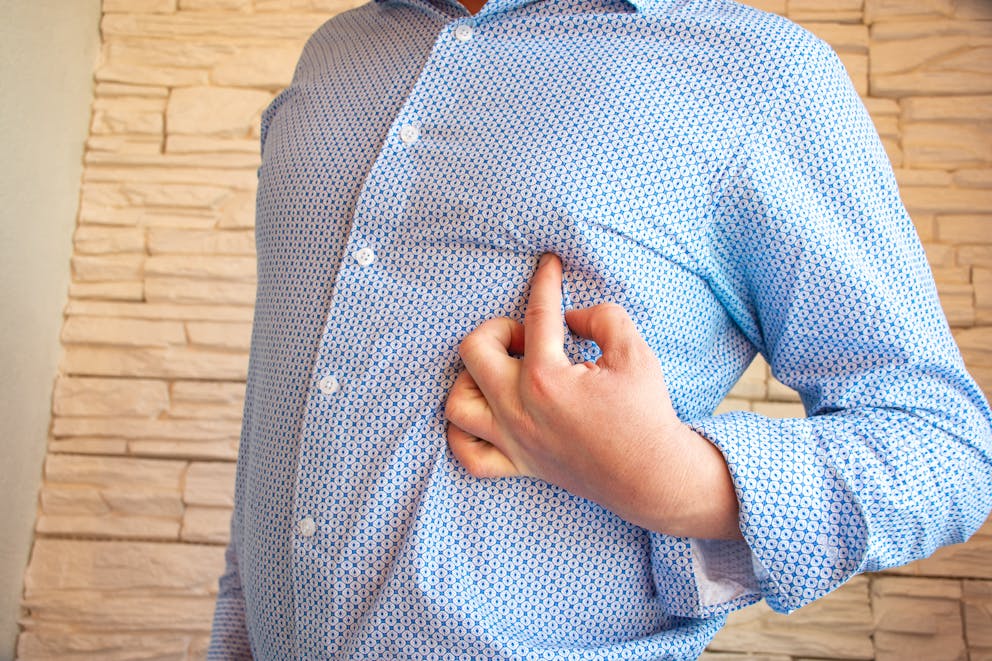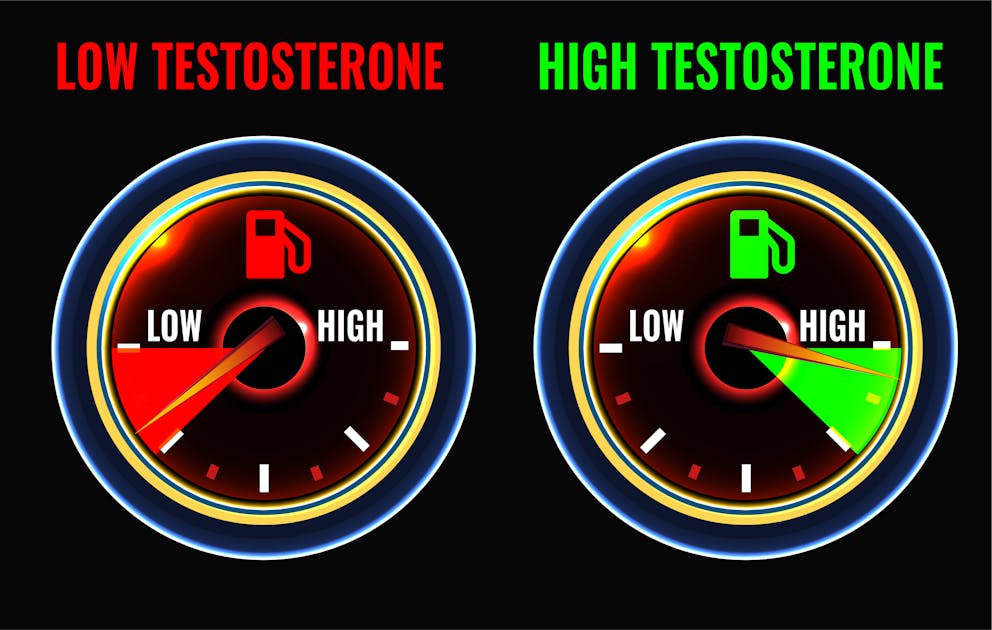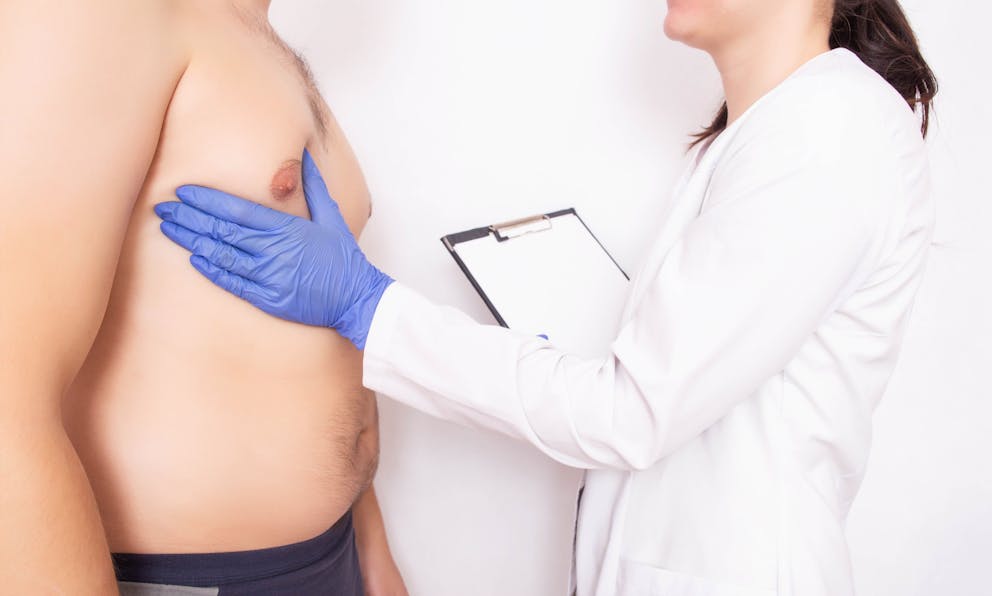Puffy Nipples: The Top Causes and Best Natural Remedies

21 Ways to Reduce Your Cancer Risk
Learn about evidence-based strategies to lower your risk of cancer
Understand the role of nutrition, sleep, and exercise in cancer prevention
Discover the dietary and lifestyle changes that make a difference
Recognize and avoid common cancer risk factors
Get practical tips on incorporating cancer-fighting foods into your daily life

21 Ways to Reduce Your Cancer Risk
Learn about evidence-based strategies to lower your risk of cancer
Understand the role of nutrition, sleep, and exercise in cancer prevention
Discover the dietary and lifestyle changes that make a difference
Recognize and avoid common cancer risk factors
Get practical tips on incorporating cancer-fighting foods into your daily life

21 Ways to Reduce Your Cancer Risk
Learn about evidence-based strategies to lower your risk of cancer
Understand the role of nutrition, sleep, and exercise in cancer prevention
Discover the dietary and lifestyle changes that make a difference
Recognize and avoid common cancer risk factors
Get practical tips on incorporating cancer-fighting foods into your daily life

21 Ways to Reduce Your Cancer Risk
Learn about evidence-based strategies to lower your risk of cancer
Understand the role of nutrition, sleep, and exercise in cancer prevention
Discover the dietary and lifestyle changes that make a difference
Recognize and avoid common cancer risk factors
Get practical tips on incorporating cancer-fighting foods into your daily life

21 Ways to Reduce Your Cancer Risk
Learn about evidence-based strategies to lower your risk of cancer
Understand the role of nutrition, sleep, and exercise in cancer prevention
Discover the dietary and lifestyle changes that make a difference
Recognize and avoid common cancer risk factors
Get practical tips on incorporating cancer-fighting foods into your daily life

21 Ways to Reduce Your Cancer Risk
Learn about evidence-based strategies to lower your risk of cancer
Understand the role of nutrition, sleep, and exercise in cancer prevention
Discover the dietary and lifestyle changes that make a difference
Recognize and avoid common cancer risk factors
Get practical tips on incorporating cancer-fighting foods into your daily life

21 Ways to Reduce Your Cancer Risk
Learn about evidence-based strategies to lower your risk of cancer
Understand the role of nutrition, sleep, and exercise in cancer prevention
Discover the dietary and lifestyle changes that make a difference
Recognize and avoid common cancer risk factors
Get practical tips on incorporating cancer-fighting foods into your daily life

21 Ways to Reduce Your Cancer Risk
Learn about evidence-based strategies to lower your risk of cancer
Understand the role of nutrition, sleep, and exercise in cancer prevention
Discover the dietary and lifestyle changes that make a difference
Recognize and avoid common cancer risk factors
Get practical tips on incorporating cancer-fighting foods into your daily life

21 Ways to Reduce Your Cancer Risk
Learn about evidence-based strategies to lower your risk of cancer
Understand the role of nutrition, sleep, and exercise in cancer prevention
Discover the dietary and lifestyle changes that make a difference
Recognize and avoid common cancer risk factors
Get practical tips on incorporating cancer-fighting foods into your daily life

21 Ways to Reduce Your Cancer Risk
Learn about evidence-based strategies to lower your risk of cancer
Understand the role of nutrition, sleep, and exercise in cancer prevention
Discover the dietary and lifestyle changes that make a difference
Recognize and avoid common cancer risk factors
Get practical tips on incorporating cancer-fighting foods into your daily life

21 Ways to Reduce Your Cancer Risk
Learn about evidence-based strategies to lower your risk of cancer
Understand the role of nutrition, sleep, and exercise in cancer prevention
Discover the dietary and lifestyle changes that make a difference
Recognize and avoid common cancer risk factors
Get practical tips on incorporating cancer-fighting foods into your daily life

21 Ways to Reduce Your Cancer Risk
Learn about evidence-based strategies to lower your risk of cancer
Understand the role of nutrition, sleep, and exercise in cancer prevention
Discover the dietary and lifestyle changes that make a difference
Recognize and avoid common cancer risk factors
Get practical tips on incorporating cancer-fighting foods into your daily life

Beginner’s Guide to Healthy Keto & Intermittent Fasting
Receive a step-by-step guide to starting Healthy Keto® and intermittent fasting
Learn about foundational principles and best practices for beginners
Get detailed visual guidance on portion sizes and meal composition
Discover how to set achievable goals and monitor your progress
Find practical tips for overcoming common challenges and staying motivated

Beginner’s Guide to Healthy Keto & Intermittent Fasting
Receive a step-by-step guide to starting Healthy Keto® and intermittent fasting
Learn about foundational principles and best practices for beginners
Get detailed visual guidance on portion sizes and meal composition
Discover how to set achievable goals and monitor your progress
Find practical tips for overcoming common challenges and staying motivated

Beginner’s Guide to Healthy Keto & Intermittent Fasting
Receive a step-by-step guide to starting Healthy Keto® and intermittent fasting
Learn about foundational principles and best practices for beginners
Get detailed visual guidance on portion sizes and meal composition
Discover how to set achievable goals and monitor your progress
Find practical tips for overcoming common challenges and staying motivated

Beginner’s Guide to Healthy Keto & Intermittent Fasting
Receive a step-by-step guide to starting Healthy Keto® and intermittent fasting
Learn about foundational principles and best practices for beginners
Get detailed visual guidance on portion sizes and meal composition
Discover how to set achievable goals and monitor your progress
Find practical tips for overcoming common challenges and staying motivated

Beginner’s Guide to Healthy Keto & Intermittent Fasting
Receive a step-by-step guide to starting Healthy Keto® and intermittent fasting
Learn about foundational principles and best practices for beginners
Get detailed visual guidance on portion sizes and meal composition
Discover how to set achievable goals and monitor your progress
Find practical tips for overcoming common challenges and staying motivated

Beginner’s Guide to Healthy Keto & Intermittent Fasting
Receive a step-by-step guide to starting Healthy Keto® and intermittent fasting
Learn about foundational principles and best practices for beginners
Get detailed visual guidance on portion sizes and meal composition
Discover how to set achievable goals and monitor your progress
Find practical tips for overcoming common challenges and staying motivated

Beginner’s Guide to Healthy Keto & Intermittent Fasting
Receive a step-by-step guide to starting Healthy Keto® and intermittent fasting
Learn about foundational principles and best practices for beginners
Get detailed visual guidance on portion sizes and meal composition
Discover how to set achievable goals and monitor your progress
Find practical tips for overcoming common challenges and staying motivated

Beginner’s Guide to Healthy Keto & Intermittent Fasting
Receive a step-by-step guide to starting Healthy Keto® and intermittent fasting
Learn about foundational principles and best practices for beginners
Get detailed visual guidance on portion sizes and meal composition
Discover how to set achievable goals and monitor your progress
Find practical tips for overcoming common challenges and staying motivated

Beginner’s Guide to Healthy Keto & Intermittent Fasting
Receive a step-by-step guide to starting Healthy Keto® and intermittent fasting
Learn about foundational principles and best practices for beginners
Get detailed visual guidance on portion sizes and meal composition
Discover how to set achievable goals and monitor your progress
Find practical tips for overcoming common challenges and staying motivated

Beginner’s Guide to Healthy Keto & Intermittent Fasting
Receive a step-by-step guide to starting Healthy Keto® and intermittent fasting
Learn about foundational principles and best practices for beginners
Get detailed visual guidance on portion sizes and meal composition
Discover how to set achievable goals and monitor your progress
Find practical tips for overcoming common challenges and staying motivated

Beginner’s Guide to Healthy Keto & Intermittent Fasting
Receive a step-by-step guide to starting Healthy Keto® and intermittent fasting
Learn about foundational principles and best practices for beginners
Get detailed visual guidance on portion sizes and meal composition
Discover how to set achievable goals and monitor your progress
Find practical tips for overcoming common challenges and staying motivated
A puffy nipple is characterized by excess breast tissue around the areola, which gives puffy nipples a protruding or swollen appearance.
While women can develop puffy nipples, it’s more common in men. It’s believed that excess body fat, low testosterone levels, genetics, and anabolic steroid use can trigger the growth of glandular breast tissue.
Let's look at the top causes of puffy nipples and learn how testosterone-rich foods can help to reduce swollen breast tissue in men.

What are puffy nipples?
Puffy nipples, also known as areolar hypertrophy, is a condition where the areola—the pigmented area surrounding the nipple–is more prominent or swollen than the surrounding breast tissue.
Puffy nipples are more common in men, and according to research published in the Sao Paulo Medical Journal, around 65 percent of men experience areolar hypertrophy at some point in their lives.
Genetic predisposition, excess body fat, and imbalanced hormone levels are believed to be the leading causes of enlarged male breast tissue.
Puffy nipples in women are less common and associated with pregnancy, breastfeeding, and variations in breast shape and size.

Three causes of puffy nipples
Both girls and boys can experience enlarged breast glands during puberty. This isn’t anything to worry about and is typically a result of hormonal fluctuations and changes in breast tissue during this key developmental stage.
Too much fat in men can lead to enlarged breasts. Fat cells in the male chest can lead to the appearance of gynecomastia which causes puffy nipples.
In contrast, puffy nipples in adult males are typically linked to dietary causes, hormone imbalance, or medication use.
Here are three common causes of puffy nipples in men.
1. Low testosterone levels
Both men and women produce testosterone and estrogen. However, testosterone is the primary male sex hormone, while estrogen is the primary female sex hormone.
Low testosterone can cause an imbalanced ratio between testosterone and estrogen, which can stimulate breast tissue growth in men and lead to areolar hypertrophy.
Low testosterone in men can be caused by factors such as:
Obesity
Estrogenic diet
Alcohol
Stress
2. Obesity
Belly fat destroys testosterone, and overweight or obese men are at greater risk of developing puffy nipples than those with a healthy weight.
Adipose tissue, commonly known as body fat, secretes aromatase, an enzyme that actively converts testosterone to estrogen. This explains why obese men often have low testosterone levels.
3. Anabolic steroid use
Anabolic steroids are synthetic drugs that mimic testosterone and are often misused to enhance muscle growth and improve physical performance.
Because anabolic steroids artificially raise testosterone levels and suppress natural testosterone production, the body may struggle to produce adequate testosterone after discontinuing steroid use.
In fact, research published in PLOS ONE suggests “ A considerable proportion of former anabolic steroid users exhibited persistent biochemical and functional hypogonadism and low testosterone, years after anabolic steroid cessation.”

How to get rid of puffy nipples
Increasingly more men are seeking gynecomastia surgery, a surgical procedure that removes swollen breast tissue. However, surgery is only an aesthetic fix and doesn’t address a potentially underlying hormonal imbalance.
Correcting low testosterone in combination with physical activity can help to minimize puffy nipples without the need for surgery.
Here are three ways to get rid of puffy nipples.
1. Boost testosterone
“Your dietary choices can significantly impact testosterone levels,” explains Dr. Berg. “Following a healthy diet and limiting your sugar and carb intake should be your first steps in restoring normal testosterone levels.”
A low-carb diet like Healthy Keto® benefits testosterone production in several ways:
Limiting carbs and sugars keeps insulin levels low, which promotes healthy testosterone levels.
Keto is incredibly effective for weight loss and helps to shed body fat. A normal body weight reduces the conversion of testosterone to estrogen. This promotes normal testosterone production and may decrease the risk of having too much estrogen.
Healthy Keto focuses on many testosterone-boosting foods, including eggs, oysters, red and organ meat, asparagus, truffles, button mushrooms, and saffron.
Healthy Keto helps you avoid processed foods that may interfere with a healthy hormone balance.
2. Intermittent fasting
Combining Healthy Keto with intermittent fasting is the best way to spike testosterone.
During fasting periods, your metabolism relies on stored body fat to generate energy which helps to reduce excess fat linked to an increased risk of puffy nipples.
In addition, intermittent fasting has been found to increase growth hormone, a natural gonadotropin that directly stimulates Leydig cells in the testes to produce and release testosterone.
3. Exercise
An exercise routine that combines cardiovascular exercises such as jogging and swimming with weight training to build muscle in the chest area can help to reduce puffy nipples.
Regular chest exercises such as push-ups, chest presses, and dumbbell flys strengthen the pectoral muscles, which helps to get rid of chest fat and can improve the appearance of puffy nipples.

When to see a doctor
In most cases, puffy nipples aren’t a serious medical concern and can be managed by making beneficial dietary and lifestyle changes.
However, in some cases, puffy nipples can be a symptom of underlying health conditions such as kidney disease, liver damage, or testicular tumors.
It’s essential to see a doctor if you experience any pain or tenderness around the nipple or notice any changes in your breasts, such as lumps, skin abnormalities, or nipple discharge. A professional medical provider can evaluate areolar hypertrophy and treat puffy nipples based on your health needs.
In more severe cases, male breast reduction surgery can be considered to remove glandular breast tissue and excess skin around the nipples.

Key takeaways
Most cases of puffy nipples aren’t a serious medical concern but may indicate hormonal imbalances in men.
Obesity, a high-carb diet, and anabolic steroid use can impair testosterone balance and trigger the growth of excess breast tissue around the nipple.
While surgery may be an option in severe cases, regular physical activity and a low-carb ketogenic diet in combination with intermittent fasting naturally boosts testosterone and can help to get rid of puffy nipples.
FAQ
1. How do you get rid of puffy nipples?
Puffy nipples in men are typically linked to low testosterone levels.
It’s recommended to reduce body fat, follow a low-carb ketogenic diet in combination with intermittent fasting and regularly engage in physical activity to support testosterone production and minimize swollen or enlarged breast tissue.
2. Why do my nipples look swollen (female)?
Puffy nipples in females are typically caused by fluctuating hormones during puberty, pregnancy, or breastfeeding.
3. Why do my nipples look swollen (male)?
Puffy nipples in men are typically linked to low testosterone levels, which can be triggered by excess body fat, a high-carb diet, a sedentary lifestyle, and a history of anabolic steroid use.
4. What are puffy nipples?
Puffy nipples, also known as puffy areolas, are characterized by excess breast tissue around the areolas, which gives the nipple a swollen and protruding appearance.
While puffy nipples can affect women, it’s more common in men. Obesity, low testosterone levels, and anabolic steroid use are believed to increase the risk of hormonal imbalances linked to puffy areolas.
5. Should I go to the doctor if I have a puffy nipple?
If you suddenly develop puffy nipples that are painful or tender or notice any changes in breast size or shape, lumps, or skin discoloration, it’s crucial to consult with a medical professional to rule out a possible underlying medical condition.
Previous blog
10 Warning Signs of Mold ToxicityTags

Popular
08/21/2024
46.5K views
05/22/2024
40.9K views
11/18/2024
242.3K views
03/18/2024
11/21/2022




